1814 At home on Quadra Island
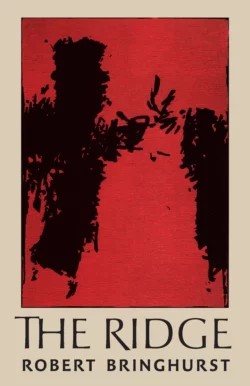 The Ridge
The Ridge
by Robert Bringhurst
Madeira Park: Harbour Publishing, 2023
$22.95 / 9781990776250
Reviewed by Harold Rhenisch
*
When poetry flows through Robert Bringhurst, it sounds of wind, trees, waves, stones knocking in surf, and scraps of birds flashing past. It even sounds like a philosopher talking to those things. Bringhurst is a gardener who stopped gardening. Gardening in deer country requires fences. That stop deer. Who might like to eat lettuces.
This failed human-deer conversation hints at one of the problems of settler culture on the Cascadian Coast. When a beautiful spot is found, such as Bringhurst’s Quadra Island, a house (or some other poem) is built on it so a human can live right there in beauty. Sadly, the process destroys the beauty of the spot.
Bringhurst takes a long view. His house, set into a forest community on Heriot Ridge, is not settled yet does include human concerns, from Greek mythology, British Columbian history, cosmology, a belief in everyday words, hints of Heidegger’s existentialism, and Kwakwala language. There, he has written many poems. They are not structures of cedar posts, milled from old growth trees, strung with chicken wire, enclosing tomatoes, corn, greens, red runner beans, and sunflowers—the usual thing on this coast. Neither do they close out cedars, Douglas firs, licorice ferns, salal, blue jays, or other local beings. They aren’t prisons for humans, nor are they stages on which the Earth fights against vegetable, horticultural, or lyrical crops. Instead, poems are observatories, grammars of spirit, forms of tending, ways of letting go, and attempts to allow for the obvious. Bringhurst is less a gardener than what is gardened.
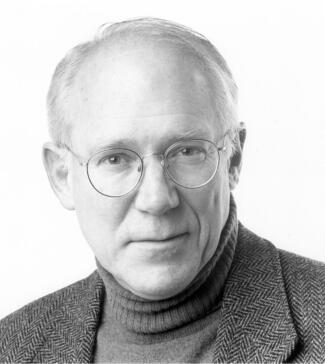
Since all Eurasian gardens are by definition guarded or walled, each with a guardian (a gardener or warden who divides what is within from what is without), Bringhurst’s is a profoundly local approach. It’s a big locality, though, because although Bringhurst’s physical location is minute, his sense of its present is vast. “The sun, in any case,” he writes in “Life Poem,” “rains down.” This image of a perpetual radiant present reaches back to Ezra Pound’s pre-First World War translation of the troubadour Arnaut Daniel’s “e lo soleils plovil” (“and the sun rains down”). Pound called it a poem written as if each word were a note picked out on a lute.
Such wild, tuned (or attuned) gardening is not new in Kwakwaka’wakw territory. On the eastern shore of the Salish Sea, just south of Quadra, Kwakwaka’wakw fishers have long rearranged beach stones to capture and shelter clams on rocky shores, in what are known as clam gardens — just one of 2,000 known gardens of this kind on the Cascadian coast. By sifting the wild ocean, by letting it pour through, nourishment — other life — is invited to settle in. It is the kind of conversation archaeologists study now and on which land claims are based.
Bringhurst makes a related claim: not a claim to the land but to its claim on him. His ridge, he argues, has created Kwakwaka’wakw culture, Bringhurst, and these poems. It is a living being.
As vast as this conception is, Bringhurst’s perspective is rooted in contemporary culture’s insistence that the here and now are all there is. A century ago, for example, Wittgenstein argued that anything other than simple language in present time is metaphysics, and imaginary. Only imaginary worlds can be based on it, not philosophies. Trickster that he is, Bringhurst provides those imaginary worlds. Here’s one from “The Ridge”:
What’s a road, after all, if not
a trail pulled out of shape,
stretched out of scale, because it’s seen
as what it’s not, not what it is?
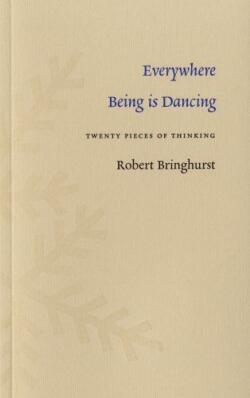
He tracks this elusive trail in a way that’s reminiscent of the B side of Wittgenstein, the “Weg” (way) of Heidegger’s existential philosophy, in which natural landforms converse with human bodies. To Heidegger, a river creates the need for a crossing, and a crossing creates loading yards, which recreate the crossing of the river as roads, and more loading yards and more crossings. They all animate people to dwell in them. The Ridge, with its strings of opened doors (that were gardens before he tore down their guards) is like that Weg, both imaginary and physical, creating paths out of 21st century lyrical and philosophical expectations.
It is a beautiful conception of being home in place. These doors, all made by the ridge, of course, are one poem over and over again, swinging open each time onto a different view. There are “Ten Poems with One Title,” for example, “Seven Poems with One Title,” and most tellingly, “One Poem with One Title.” There is “The Ridge” itself, sixty pages long, and the rubble of tumbled stones that are the other poems lying at its feet, that we scramble over to reach. On this jumbled path, poems like “Lute Poem” play their wisdom as notes, not conclusions. Bringhurst’s lines, “The first qualification for playing / the lute is exactly the same as for making / the poem,” could be played any way you like, even like this:
The first qualification for playing
the poem is exactly the same as for making
the lute.
It could even be this:
The exact qualification for making
the lute is first the same as for playing
the poem.
The details don’t make this language. They fill it, just as Daniel and Pound do.
Similarly, “Speech is vapour, song liquid, script solid,” (from “Language Poem”) could as easily roll off the tongue as “Speech is solid, song vapour, script liquid,” without changing appreciably. It’s like saying the definition of an alder tree is an alder tree. Bringhurst’s forest would hardly disagree.
Bringhurst’s linguistic trick resembles Williams’ famous poem “so much depends,” with its red wheelbarrow, its glaze of rainwater and its chickens. Once we accept the opening “so much depends upon” (and we have no choice in that), anything can be introduced to complete it. It doesn’t have to be a wheelbarrow. So much could depend upon a woodpecker pounding at a Douglas fir stump, or on salmon bones as Bringhurst watches the tide wash over them. Speakers and listeners of themselves, the things of this physical language are never independent of their relationships. As Bringhurst puts it in his simplified, almost prosaic, and echoing terms in “The Ridge”:
The mind
of the ridge is as large as the ridge,
and the mind of the world as large and as varied
and full as the world.
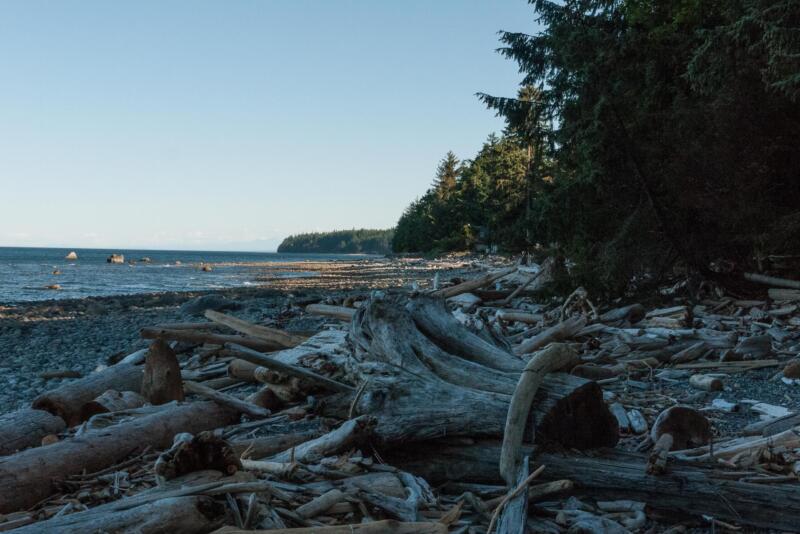
Such poems complete arguments Bringhurst has been making for a quarter century in the essays collected in such books as Everywhere Being is Dancing and The Tree of Being: poetry is a function of the universe; language predates humans. Humans are a sort of forest that poetry flows through. Even one that it speaks. The meaning of these poems is their underlying grammar: their bedrock and their uplifted ridge. It is like the slots in carbon strings that allow for photosynthesis. “A doorway,” Bringhurst writes, “in Kwakwala, is a trail — / taxalá.” When this trail is walked on its own scale, ravens, sea slugs, yellow cedars, and humans are all words. The net of relationships they build gives them variable points of contact, called meaning. The leaf of an alder catching sunlight filtering down into a rainforest stream bed does no more and no less.
Such language washes away a good chunk of philosophy that strives for logical proofs. Bringhurst just strives for open moments of experience, the words for which take many forms. Few of those are human.
Wisely, he presents this ridge, both the thrust of energy in the book that bears its name and Heriot Ridge on Quadra Island, as a book in its own right, not as it might be in some perfect world but as it exists now in all its wounds and all the ways it has responded to them, including the great fire of July 1925, that left only a few trees standing. It is a loss Bringhurst still mourns.
In the end, however, the insistence on a simple natural prose language elevated by echoes and bound by chiming participles—such as, “Then boiling churning choking crow-black / smoke and gut-red crimson-yellow fire / swirling churning jumping, flowering / and flying through the superheated air”—doesn’t always fully embody the ridge’s energy. English language is capable of more. It all raises the question of whether Bringhurst’s brilliant argument might just be a fleeting, enjoyable artifice.
Bringhurst, the consummate magician, doesn’t say. “The Ridge” closes with him accepting mortality and blurting out “Toodle-oo,” as if the whole point of a book of presence is not to be present. Like a Zen koan, like the sound of one hand clapping, in “Life Poem” it is both there and not there:
Language is a sign of life, like swimming, and a form
of life, like eels, but it’s not a way of living.
It’s also not the life that anything lives —
not even ideas.
It is about settling in a place until it settles in you, until it just passes through, until you pass through yourself.
It is sad to see him go and to be left standing with his questions and all of his observations, while he takes his answers with him, except, perhaps, the all-important one: identities, whether English or Kwakwala, or poets, or Pacific yews, or Kwakwaka’wakw clam farmers, are words in this language, that, in “Language Poem,” “Everything speaks for itself… / and everything rests in what is unspoken.” It all goes on, Bringhurst notes, as long as there is one speaker and one listener. If those are lost, identity is lost, too.
This book is a door to silence, and a path stretching out from it, like none other.
*
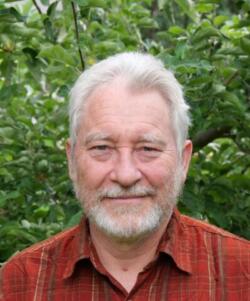
Harold Rhenisch has written some thirty books from the Southern Interior since 1974. He won the George Ryga Prize for The Wolves at Evelyn (Brindle & Glass, 2006), a memoir of German immigrant life from the Similkameen to the Bulkley valleys. His other grasslands books are Tom Thompson’s Shack (New Star, 1999) and Out of the Interior (Ronsdale, 1993). He lived for fifteen years in the South Cariboo and has worked closely with the photographer Chris Harris on Spirit in the Grass (2008), Motherstone (2010), and Cariboo Chilcotin Coast (2016), as well as on The Bowron Lakes (2006), all published by Country Lights; and he writes the blog Okanagan-Okanogan. He is working on Commonage, a history of the Okanagan region, highlighting the American history of Father Charles Pandosy and situating the roots of the Commonage land claim in the North Okanagan in American colonial practice in Old Oregon. Editor’s note: Harold Rhenisch has recently reviewed books by Rayya Liebich, Sarah de Leeuw, Roger Farr, Stephan Torre, Don Gayton, and Calvin White for The British Columbia Review. His recent book Landings (Burton House, 2021) was reviewed by Luanne Armstrong; The Tree Whisperer (Gaspereau, 2021) was reviewed by Adrienne Fitzpatrick. Harold lives in Vernon.
*
The British Columbia Review
Interim Editors, 2023-24: Trevor Marc Hughes (non-fiction), Brett Josef Grubisic (fiction)
Publisher: Richard Mackie
Formerly The Ormsby Review, The British Columbia Review is an on-line book review and journal service for BC writers and readers. The Advisory Board now consists of Jean Barman, Wade Davis, Robin Fisher, Barry Gough, Hugh Johnston, Kathy Mezei, Patricia Roy, Maria Tippett, and Graeme Wynn. Provincial Government Patron (since September 2018): Creative BC. Honorary Patron: Yosef Wosk. Scholarly Patron: SFU Graduate Liberal Studies. The British Columbia Review was founded in 2016 by Richard Mackie and Alan Twigg.
“Only connect.” – E.M. Forster
9 comments on “1814 At home on Quadra Island”
Harold Rhenisch’s penetrating review is an open-ended reception of the words, musicality, and silences that wend-wind their way through Robert Bringhurt’s The Ridge. Both Harold and Robert share a profound respect for place, the land, the non-human creatures, the consciousness of the interconnected world that sometimes speaks through poets’ words but always remains a profound mystery.